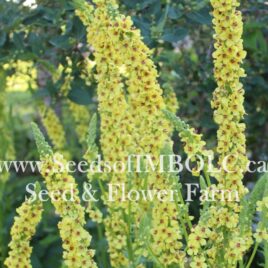perennial
Showing all 9 results
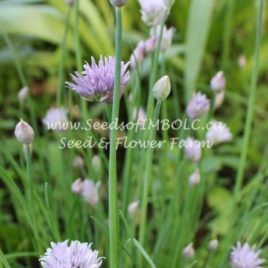
Chives (Allium schoenoprasum)
Chives have a unique, spicy flavour that's somewhere between the taste of garlic and onions in both the leaves and flowers. A relative of onions and leeks, but classified as an herb with tall, dark green, slender leaves that are hollow inside. The beautiful pale purple blooms made of tiny flower clusters are edible too.
Not only a cinch to start growing, they’re a perennial herb (zones 3 -10) —meaning they will grow in your garden for years!
Used as a garnish mostly, the promising health benefits of these alliums suggest adding them into your diet more often!
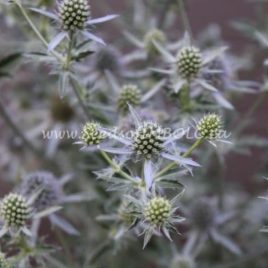
Eryngium – Sea Holly
Eryngium planum, commonly called sea holly, is a remarkable clump-forming perennial that features a summer bloom of steel-blue, thistle-like flower heads on branched stems rising from a rosette of dark green basal leaves. Attracts pollinators! Stiff, branched, violet-blue stems (to 32” tall), bearing abundant, egg-shaped, thistle-like, violet-blue flower heads, rise from each basal rosette in summer. Each flower head is a spherical-cylindrical umbel that is packed with tiny, stemless, violet-blue flowers. Summer bloom is often profuse.
Excellent for cut or dried flower arrangements.
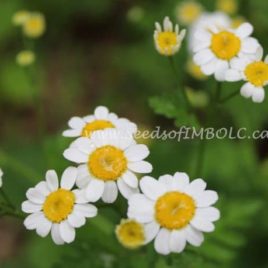
Feverfew -Matricaria
Matricaria, also known as feverfew, botanical name Tanacetum parthenium, is very cheerful, prolific branching flower, excellent as a filler in bouquets!
Long, strong stems that support abundant, 1/2–1" daisy like blooms with yellow disks and white petals. Easy to grow and harvest.
Feverfew is believed to aid digestion, and lower blood pressure. There is some scientific evidence that drinking feverfew tea, or adding a few fresh leaves leaves to a sandwich everyday, can for some people, reduce the frequency and severity of migraine headaches.
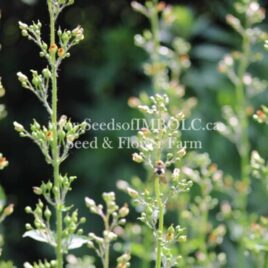
Figwort (Scrophularia nodosa)
Figwort is a hardworking perennial herb that will flower the first year from seed if started early. Great for medicinal use, cut flower filler and pollinator magnet! Recommended by Erin at Floret
Branching plants produce an abundance of long stems smothered in rather inconspicuous, chocolate and green hoodlike blooms, similar to snapdragons, which ripen into egg-shaped seed capsules and those seed pods are just the perfect bouquet filler for interest and movement!
Figworts are among the most prolific nectar producers in the plant world! A favourite of hummingbirds & many pollinators.
See below for more!
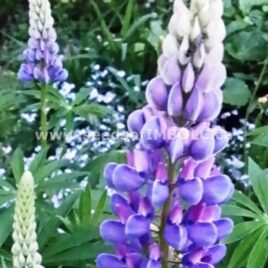
Lupin Mix
A member of the pea family, Lupins are a wonderful old-fashioned flower, with spires of blue, yellow, pink, purple, white, peach and bicolours.. Although they are perennials, lupins are in the class of short-lived perennials. They put all their energy into those magnificent flower stalks and wear themselves out in the effort. Lupins live in the range of two to five years, but luckily they will self seed and the butterflies and bumblebees will love you.
*All parts of this plant are poisonous, including the seeds. Exercise extreme caution around children and pets. The purchaser assumes all liability relating to the use of this product.
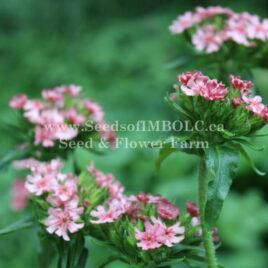
Lychnis Chalcedonica – ‘Dawn Sky’
Loving this Dusky pink Maltese Cross (Lychnis chalcedonica "Dawn Sky") Hardy fuss free & beautiful in a vase & in the garden Apricot-pink flower clusters bloom in early to mid-summer. (usually beginning of July here)
A rare heirloom, given old names such as Nonesuch and Mock Sweet William, it is a hardy survivor. Easy and pest free, it's showy grown in masses in the cottage garden. This could be the ‘pale red’ variation of the traditional bright scarlet maltese cross that was mentioned in Curtis’s Botanical Magazine in 1794.
Perennial Zone: 4,5,6,7,8
approx 75+ seeds
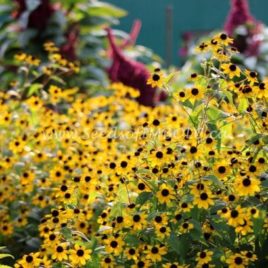
Rudbeckia triloba – ‘Black Eyed Susan’
These miniature-sized flowers are borne in airy sprays, and when added to arrangements, they bring a happy, uplifting vision! Butterflies are attracted to the nectar and birds to the seeds. R. triloba pumps out hundreds of charming, warm yellow daisy flowers with brown button centres on tall, strongly branching plants. Blooming nonstop summer through fall, it adds sparkle to your garden beds and wildflower gardens.
Circa 1699! RHS Award of Garden Merit and Georgia Gold Medal winner! This biennial to short-lived perennial is native to the central and northeastern portions of the US.
See below for more....approx 100 seeds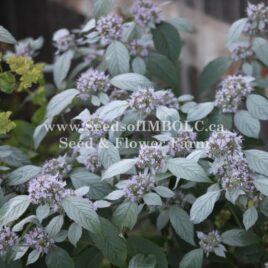
Silverleaf Mountain-mint
Pycnanthemum incanum Perennial (hardy in zones 5-8)
Perennial (hardy in zones 5-8) Commonly called hoary mountain mint & native to eastern North America with striking fragrant silvery-white upper leaves and white/lavender spotted flowers in late summer.This herb is an excellent honey plant and food source for bees, butterflies, and moths.
It was literally covered in pollinators!
Now endangered in Ontario, Vermont and New Hampshire, planting seeds will help this beautiful native plant recover and flourish. Will thrive in most garden soils in full sun or part shade. Will tolerate dry better than most mints. Ht. 90cm/3ft.
approx 100 seeds